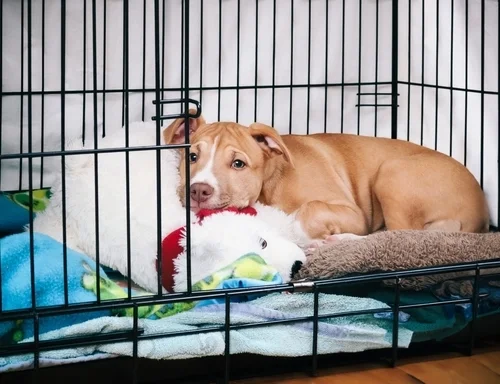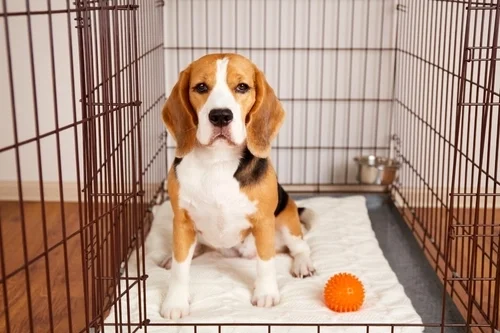Crate Training for Puppies: Tips to Build Routine and Comfort

Crate Training for Puppies: Tips to Build
Routine and Comfort

Crate Training Basics: Helping Your Puppy Feel at Home
Bringing home a puppy means playtime, cuddles, and a whole new routine. One of the most helpful tools to include in your puppy parenting plan is crate training for puppies. While a crate might seem limiting at first, it can actually become a cozy and comforting space your puppy chooses to rest in. With consistency and patience, a crate can feel just like home.
Crate Training Basics: Helping Your Puppy Feel at Home
Bringing home a puppy means playtime, cuddles, and a whole new routine. One of the most helpful tools to include in your puppy parenting plan is crate training for puppies. While a crate might seem limiting at first, it can actually become a cozy and comforting space your puppy chooses to rest in. With consistency and patience, a crate can feel just like home.
How to Make the Crate Comfortable
You can make crate time easier by feeding your puppy meals inside the crate or giving them a special chew toy while they rest. If your puppy whines, try to stay calm. Avoid opening the door while they’re making noise, since this teaches them that quiet behavior is what gets rewarded. Over time, they will learn to settle on their own.
Crate Training Tips for Bedtime
Crate training a puppy at night takes some patience. For the first few nights, it helps to place the crate near your bed so your puppy doesn’t feel alone. Be ready for a potty break in the middle of the night, especially early on. Keep nighttime outings quick and quiet so your puppy learns that bedtime is for sleeping, not playing.

How to Make the Crate Comfortable
You can make crate time easier by feeding your puppy meals inside the crate or giving them a special chew toy while they rest. If your puppy whines, try to stay calm. Avoid opening the door while they’re making noise, since this teaches them that quiet behavior is what gets rewarded. Over time, they will learn to settle on their own.
Crate Training Tips for Bedtime
Crate training a puppy at night takes some patience. For the first few nights, it helps to place the crate near your bed so your puppy doesn’t feel alone. Be ready for a potty break in the middle of the night, especially early on. Keep nighttime outings quick and quiet so your puppy learns that bedtime is for sleeping, not playing.
Common Crate Training Mistakes to Avoid
Try not to crate your puppy for long hours during the day. Puppies need lots of breaks, playtime, and human interaction. If you have a busy schedule, ask a friend or pet sitter to stop by. A tired and content puppy will be more successful with crate training and other routines.
Stay Consistent and Keep Going
Like most good habits, crate training takes time. Your puppy will slowly gain more independence and confidence as they get used to the routine. You’ll also have peace of mind knowing your puppy is safe when you’re not there to watch them.
At Happiness Is Pets, we’re here to share helpful puppy tips and guidance as you learn the ropes of puppy parenting. We believe that a little knowledge can go a long way in making this new chapter easier and more enjoyable. Whether you're exploring crate training or building a daily routine, our goal is to support you with simple, easy-to-understand advice. Raising a puppy comes with a lot of questions, and Happiness Is Pets is here to help you feel more confident along the way.
